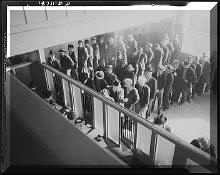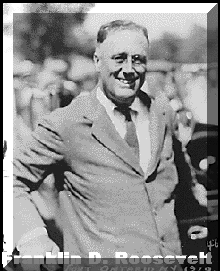|
USII.5a Early 20th Century -Transportation, Communication, Electrification |
|
|
The student will demonstrate knowledge of
the social, economic, and technological changes of the early twentieth
century by a) explaining how developments in transportation (including the use of the automobile), communication, and electrification changed American life. |
|
|
How was social and economic life in the early twentieth century different from that of the late nineteenth century? |
|
|
Technology extended progress into all areas of American life, including neglected rural areas. |
|
Results of
improved transportation brought by affordable
automobiles
Greater mobility
Greater mobility Creation of jobs Growth of transportation-related industries (road construction, oil, steel, automobile) Movement to suburban areas
Invention of the airplane
|
Development of the radio
(role of Guglielmo Marconi) and broadcast industry (role of David Sarnoff)
and broadcast industry (role of David Sarnoff) Development of the movies Ways electrification changed American life Labor-saving products (e.g., washing machines, electric stoves, water pumps) 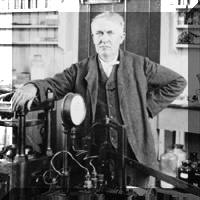 Electric
lighting Electric
lightingRead about Edison's Light Bulb Watch one of Edison's Kinetiscope Movies
|
|
USII.5c The Harlem Renaissance |
|
|
The student will demonstrate knowledge of
the social, economic, and technological changes of the early twentieth
century by c) examining art, literature, and music from the 1920s and 1930s, emphasizing Langston Hughes, Duke Ellington, and Georgia O'Keeffe and including the Harlem Renaissance. |
|
|
Who were the leaders in art, literature, and music? What were their contributions? |
|
|
The 1920s and 1930s were important decades for American art, literature, and music. |
|
|
Cultural climate of the
1920s and 1930s
ArtGeorgia OKeeffe, an artist known for urban scenes and, later, paintings of the Southwest
|
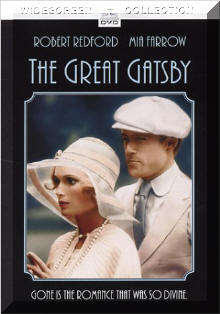 LiteratureF. Scott Fitzgerald,
a novelist who wrote about the Jazz Age of the 1920s; LiteratureF. Scott Fitzgerald,
a novelist who wrote about the Jazz Age of the 1920s;  John Steinbeck,
a novelist who portrayed the strength of poor migrant workers during the
1930s John Steinbeck,
a novelist who portrayed the strength of poor migrant workers during the
1930s MusicAaron Copland and George Gershwin, composers who wrote uniquely American music "I Got Plenty O' Nuttin'" from the Gershwins' "Porgy and Bess." More Gershwin Clips  The Ultimate Copland Album |
|
How did the Harlem Renaissance influence American life? |
|
|
The leaders of the Harlem Renaissance drew upon the heritage of black culture to establish themselves as powerful forces for cultural change. |
|
| Harlem Renaissance African American artists, writers, and musicians based in Harlem revealed the freshness and variety of African American culture.  ArtJacob Lawrence, painter
who chronicled the experiences of the Great Migration north through art ArtJacob Lawrence, painter
who chronicled the experiences of the Great Migration north through artSee Migration Series |
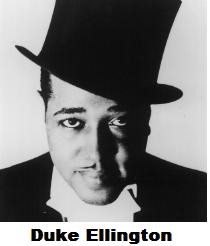 MusicDuke Ellington and
Louis Armstrong, jazz composers; Bessie Smith, blues singer MusicDuke Ellington and
Louis Armstrong, jazz composers; Bessie Smith, blues singer
Read more about Duke Ellington |
 LiteratureLangston Hughes, poet who combined the experiences of African and American cultural roots |
Learn more about
Langston Hughes From Busboy to Poet "Langston's Early Years" Langston Touches the Soul "Langston Hughes, Man of the People" Play that Tune, Speak the Word! "A Renaissance Man" |
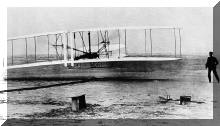
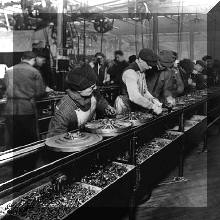
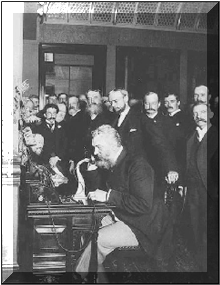
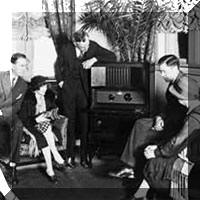 Entertainment (e.g., radio)
Entertainment (e.g., radio)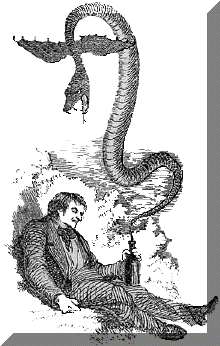
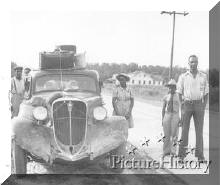

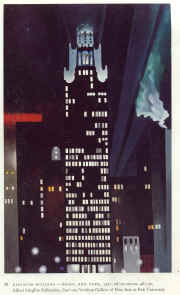
 Causes of the Great Depression
Causes of the Great Depression 